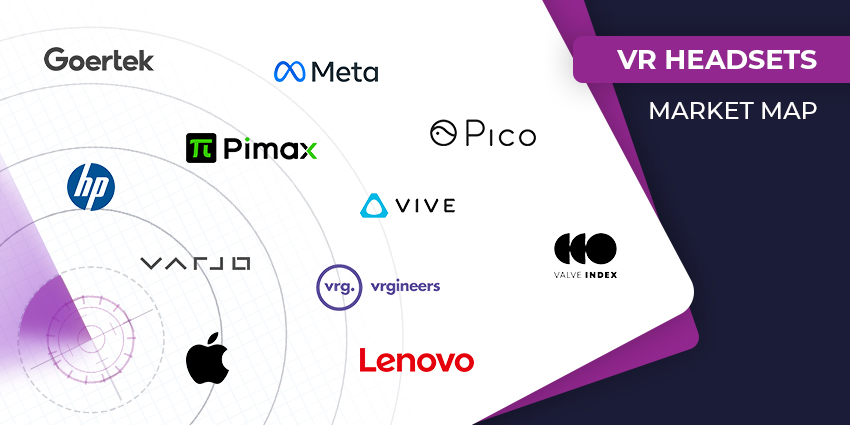As the demand for virtual experiences grows, there is an opportunity for advertisers to connect with much larger audiences and resonate with them at an emotional level.
According to the 2021-2022 Consumer Tech Preferences survey by GroupM, nearly one in three respondents said they own an AR or VR device, and 15 percent plan on buying such a device in the next 12 months. Along with this, customers are also extremely open to advertising-enabled content experiences.
The survey found that 73 percent of respondents are happy to see regular ads if it lowers the cost of content consumption, meaning that, as larger audiences consume content in VR, their openness to ad consumption means that there are very real opportunities for brands. Here’s how VR could transform advertising.
What Is Virtual Reality Advertising?
VR advertising entails that brands will develop and deliver immersive advertising experiences using VR technology along with the usual physical and digital ad channels. A VR ad takes place in a simulated 3D world, where ad viewers can engage with content without any external disruptions or interruptions.
Unlike augmented reality (AR) ads, VR advertising does not blend the real world with simulated elements. Instead, customers are transported to fully immersive virtual spaces where they can consume content independent of their physical surroundings.
The idea of VR advertising is not new, and since the mid-2010s, luxury and future-focused brands have taken advantage of VR to connect with customers on an emotional level and present rich visual experiences impossible through traditional mediums. In 2017, for example, Gucci created a virtual reality video for its 2017 Christmas and gift-giving campaign.
Two things make VR a bigger opportunity for advertisers today than ever before. First, VR headsets have become more affordable and accessible, and powerful devices like Oculus Quest 2 are available for as little as $299 USD and the cost of PlayStation VR has significantly fallen from its launch price of $499 USD. VR headsets are now more affordable than most flagship smartphones, positioning it squarely as a consumer item.
Second, several companies are making moves to develop the Metaverse, which is a unified VR world with interoperable experiences, multiple use cases, and a reliance on AI and blockchain technology. The Metaverse would make VR content consumption more seamless, making it easier to incorporate ads into content.
There are four ways in which virtual reality promises to transform advertising for good.
4 Ways VR Will Transform Advertising
According to a 2021 PwC report, virtual reality is the fastest-growing content type in the world with a 30 percent compound annual growth rate (CAGR) — more than even cinema and OTT — enabling plenty of advertising use cases:
1. Advertising experiences in the travel and tourism sector
Ad content in travel and tourism can never hope to recreate the real look and feel of a holiday destination. However, VR could potentially change this by allowing hospitality brands to recreate entire travel experiences in VR.
From virtual sunsets to monuments, and visits to remote locations to conversations with historic figures, the possibilities for VR use cases are endless.
2. Driving empathy in non-profit advertising
VR advertising can recreate in-person experiences to drive empathy so that advertisements have a deeper impact. A good example of this is a 20-minute VR experience created by Stanford that explored the impact of racism and bias in healthcare environments and how they can cause microaggressions in the workplace.
94 percent of the audience agreed that VR was an effective tool to convey the message, and similar principles have been applied to create the Scottish Government’s road safety ad.
3. Seamlessly embedding ads in VR gameplay
Gaming was always among the top use cases for consumer VR, and it continues to rapidly grow as an industry. Brands can partner with gaming companies to weave ad content into gaming experiences, much like how real-world brands have used Pokémon Go to attract customers to their retail stores.
Game characters could wear branded apparel, display boards could portray real-world brands and products, and there micro stories ingames could also depict a relevant brand story.
4. Selling product versions as NFTs
VR can also provide customers with another channel to engage with their favorite brands. This is particularly true for brands with a loyal customer base, apart from a product’s pricing and utility factors.
Inside VR, companies can sell 3D replicas of real-world products as NFTs, which are legally ‘owned’ by the customer but also act as a piece of permanent advertising, reminding buyers about brands and their value. Companies like Nike and Adidas have already launched a series of sneaker NFTs that can be purchased for use in VR.
The Future of VR in Advertising
In a way, the future of VR in advertising is already here, with Meta Platforms Inc already testing embedded ads inside Oculus Quest headsets, and in 2021, the company began rolling out ads to some of the games for Quest, starting with first-person shooter Blaston.
As mentioned, luxury brands are already relying on VR ads to stand out in the crowd and inspire new conversations, but could firms face any challenges when advertising?
Brand should consider that data privacy and consent norms applying to all digital ads will also apply in VR. Companies must be careful when personalizing or targeting ad content.
The age-appropriate nature of ad content has to be ensured when targeting users. Brands should remember that a large number of VR users, especially in gaming, could be children and teenagers.
Scaling VR ads could also pose a challenge, given that the medium relies on heavy network consumption and compute resources. Once these challenges are addressed, VR is poised to become a mainstay for advertisers.






